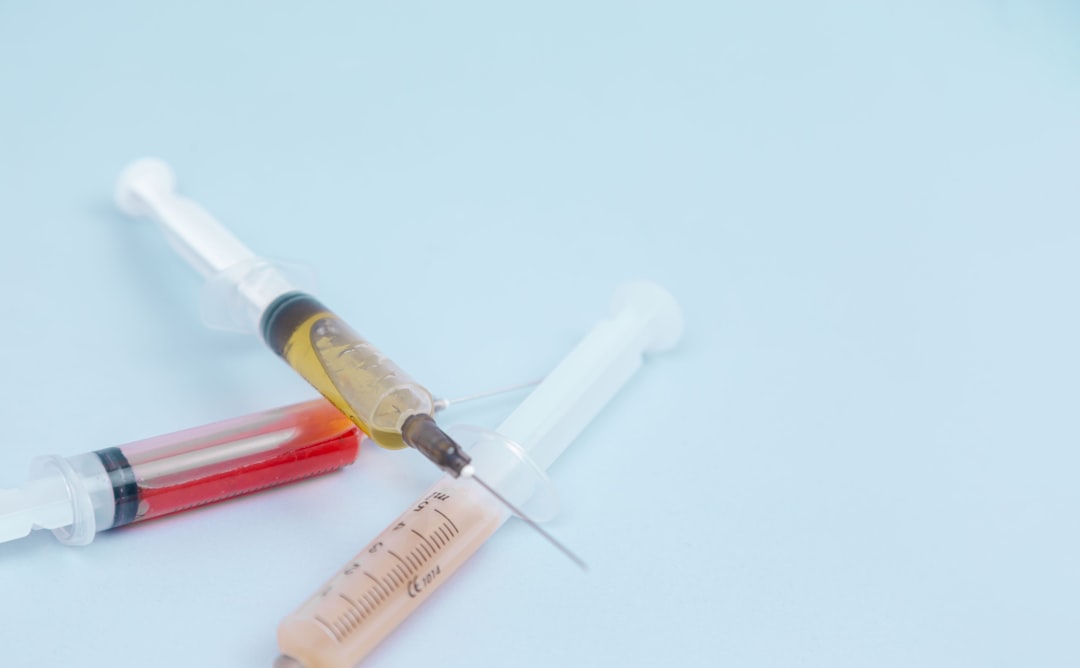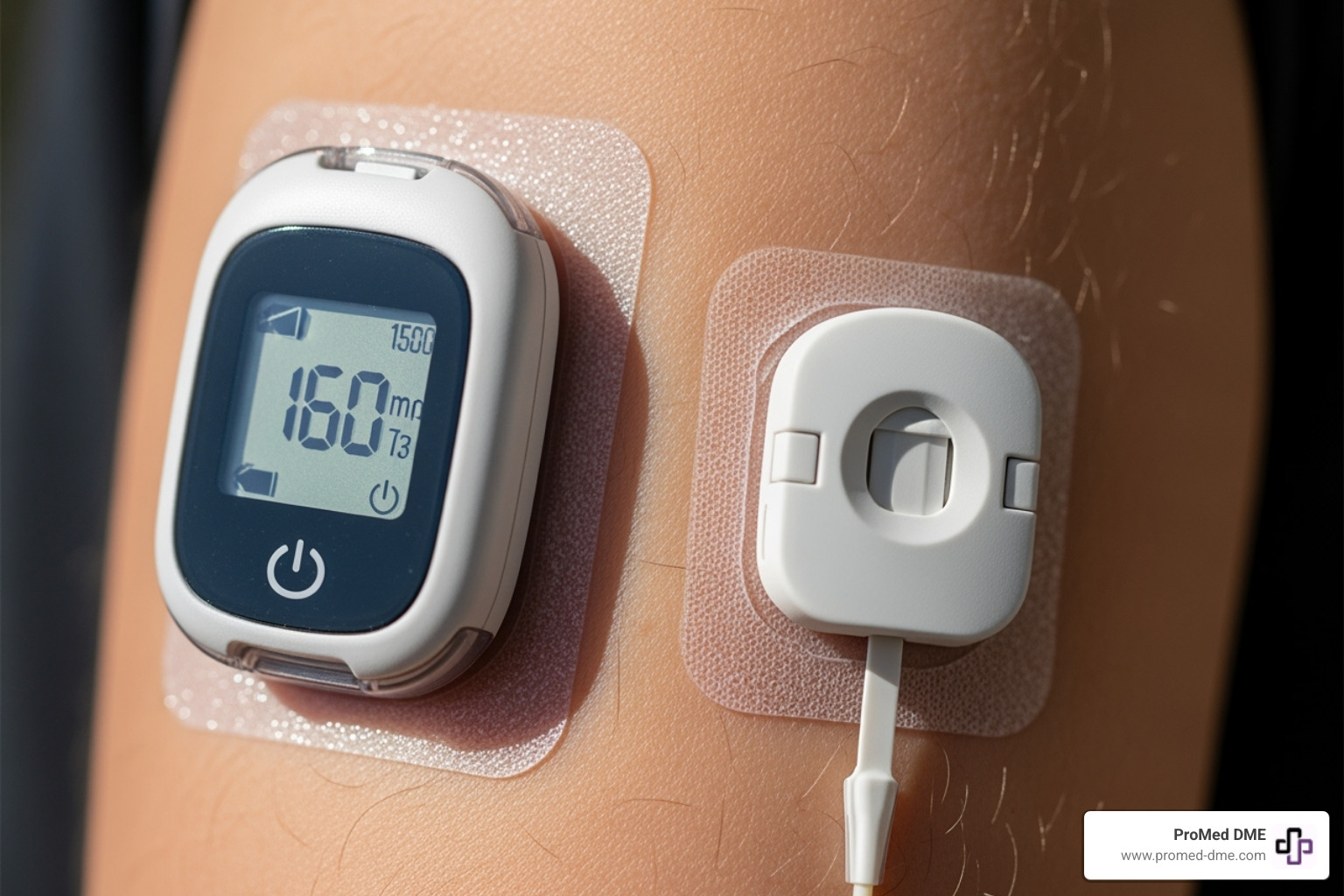Over-the-Counter CGMs: Sweet Freedom or Risky Business?
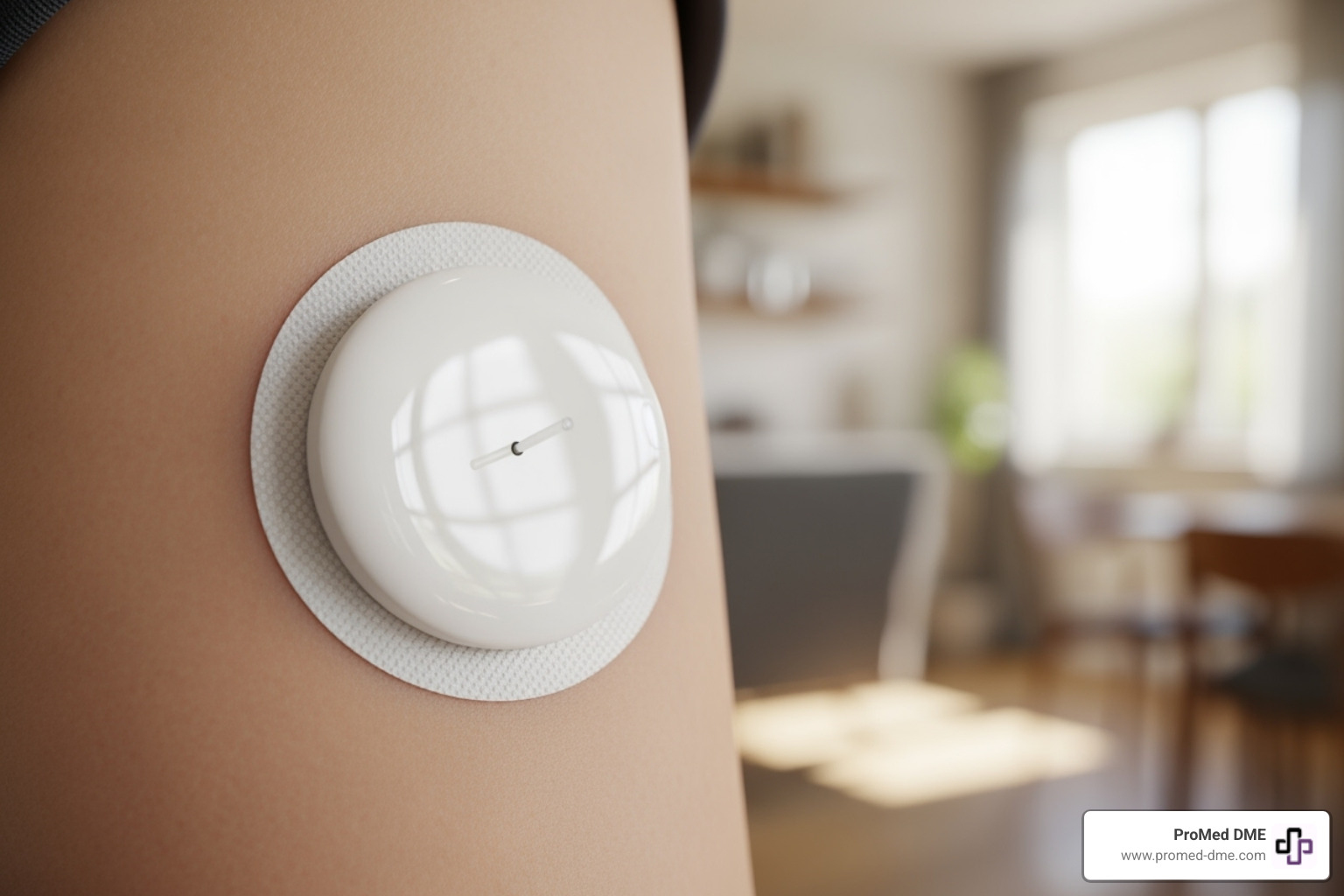
The New Era of Glucose Monitoring
Getting a CGM without prescription is now a reality due to recent FDA approvals. This marks a major shift from painful, daily finger pricks to continuous glucose monitors (CGMs) that measure glucose levels in the fluid under your skin 24/7.
Traditionally, CGMs required a prescription and were mainly for insulin users. That's changing. In March 2024, the FDA cleared the first over-the-counter (OTC) CGM, making this technology accessible to any adult 18 or older without a doctor's visit. Key upcoming OTC options include the Dexcom Stelo and Abbott Lingo.
This shift is important because glucose levels affect everyone. As one user said, "It's ridiculous to need a prescription to measure one's own blood sugar with a CGM." These new CGMs work like prescription models—a small sensor on your arm sends data to your smartphone. The key difference is the lack of alerts for dangerous lows, making them suitable for wellness tracking but not for those who use insulin.
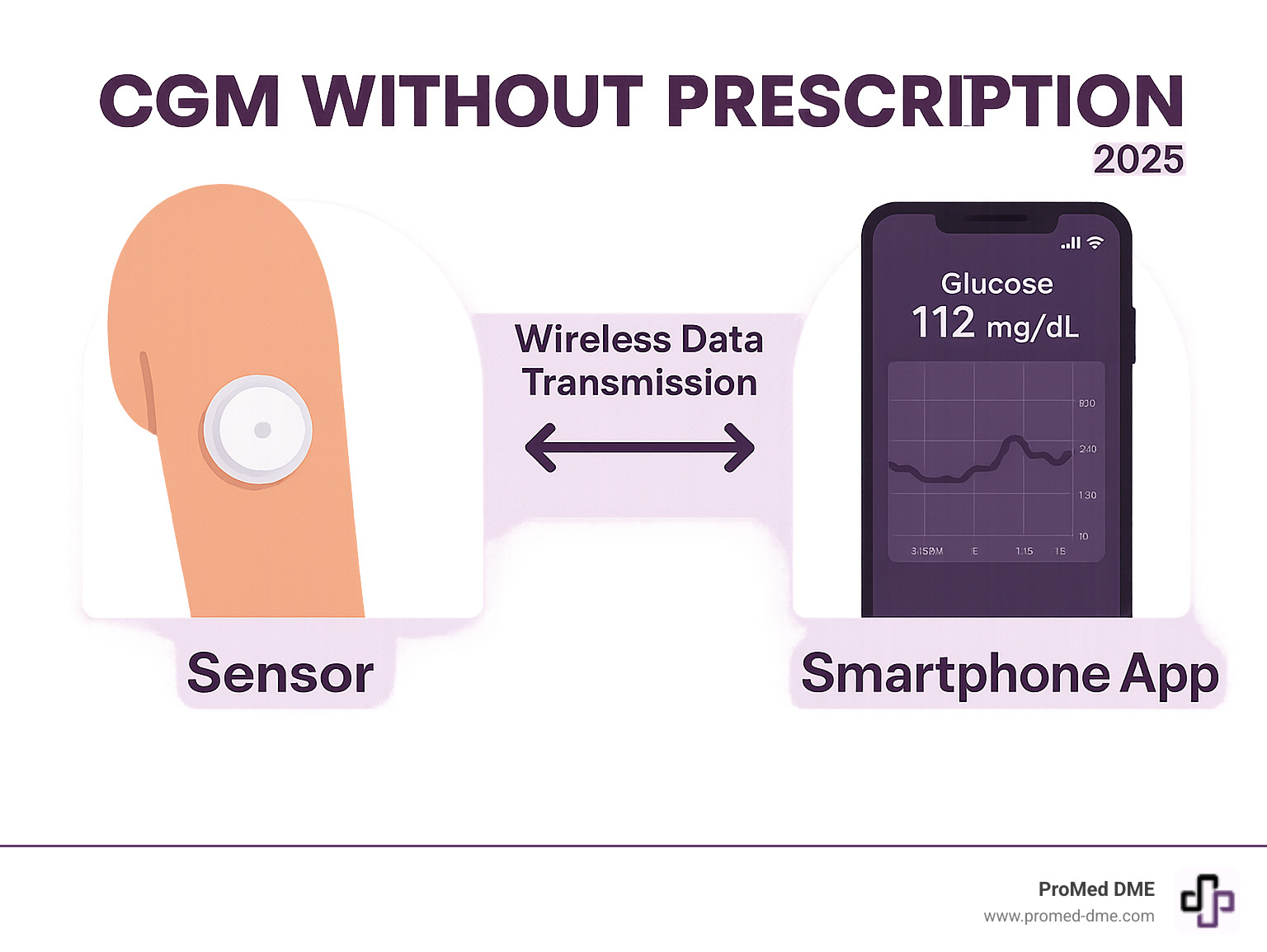
Simple guide to CGM without prescription terms:
Understanding the Latest Accessible CGMs
The world of glucose monitoring is changing rapidly. For years, Continuous Glucose Monitors (CGMs) required a prescription and were primarily for people managing diabetes with insulin. Now, thanks to recent FDA clearances, devices like the Dexcom Stelo Glucose Biosensor System are making this technology accessible to a wider audience.
These new models are designed for adults 18 and older who are not on insulin. They use reliable technology, similar to prescription versions, but with key differences for over-the-counter (OTC) use.
Here's a look at the features of these accessible CGMs:
- Designed for Non-Insulin Users: This is a critical point. These devices are not intended for individuals who use insulin.
- 15-Day Wear Time: The Stelo, for example, offers a long 15-day wear time for continuous monitoring.
- 30-Minute Warm-Up: Like prescription models, these sensors require a brief warm-up period after application.
- Data Every 15 Minutes: Accessible models like Stelo provide glucose data every 15 minutes, which is sufficient for tracking trends related to lifestyle factors.
- No Alerts for High or Low Glucose: This is a major difference. OTC CGMs do not have alarms for high or low glucose, making them unsuitable for anyone who needs immediate warnings about dangerous glucose swings, especially hypoglycemia.
- Age Restriction 18+: Currently, devices like the Dexcom Stelo are approved for adults 18 and over.
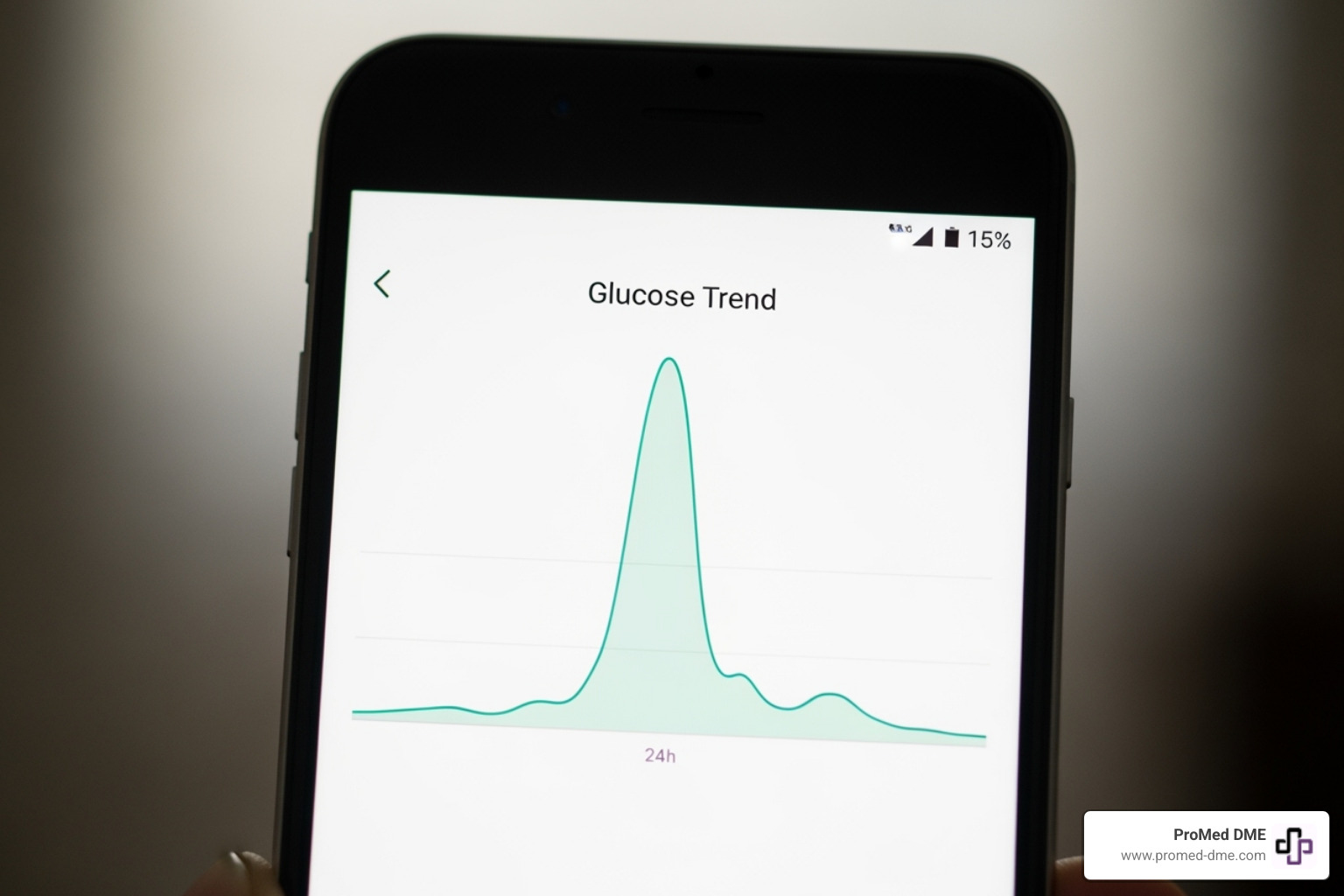
Who benefits from more accessible CGMs?
The arrival of CGM without prescription is a game-changer for several groups:
- Individuals without diabetes: Health-conscious people can use an OTC CGM to see how their bodies react to food, exercise, and stress, offering a peek into their metabolic health without a medical diagnosis.
- Health enthusiasts and biohackers: Those looking to optimize their health can use real-time glucose data to fine-tune their diet and workout routines.
- People with prediabetes: A CGM can be a powerful tool for self-management, showing how lifestyle changes impact glucose levels and potentially helping to prevent Type 2 diabetes. For more information, you can explore More info about pre-diabetes.
- Individuals with Type 2 diabetes not on insulin: For those who manage their condition with oral medications or lifestyle changes and don't experience problematic low blood sugar, an accessible CGM offers valuable insights into glucose trends.
How accessible CGMs help track lifestyle impact
A CGM without prescription provides personalized insights into how daily life affects your glucose levels. It's like having a personal health coach on your arm.
- Diet and food choices: See in real-time how different foods, portion sizes, and meal timing affect your glucose, helping you make informed dietary changes.
- Exercise impact: Understand how various physical activities affect your glucose, allowing you to optimize your workout routine.
- Sleep and stress: A CGM can reveal how sleep quality and stress impact your glucose levels and overall stability.
- Personalized health insights: The data is unique to your body, empowering you to identify personal "glucose triggers" and make proactive health decisions that stick.
Accessible CGMs vs. Traditional Prescription CGMs: A Head-to-Head Comparison
When considering a CGM without prescription, it's important to understand how these new accessible models differ from traditional prescription versions. Both track important health data, but they are designed for different purposes and users.
The main differences are in accessibility, features, and data granularity. Prescription CGMs are medical devices for people managing diagnosed diabetes, especially insulin users. They include critical safety features like urgent low glucose alarms that require medical oversight. Accessible CGMs, in contrast, focus on wellness insights and lifestyle tracking, omitting the medical-grade alerts.
This focus on wellness makes accessible CGMs simple and immediately available without a doctor's appointment or insurance problems. However, this convenience involves trade-offs in features and data frequency.
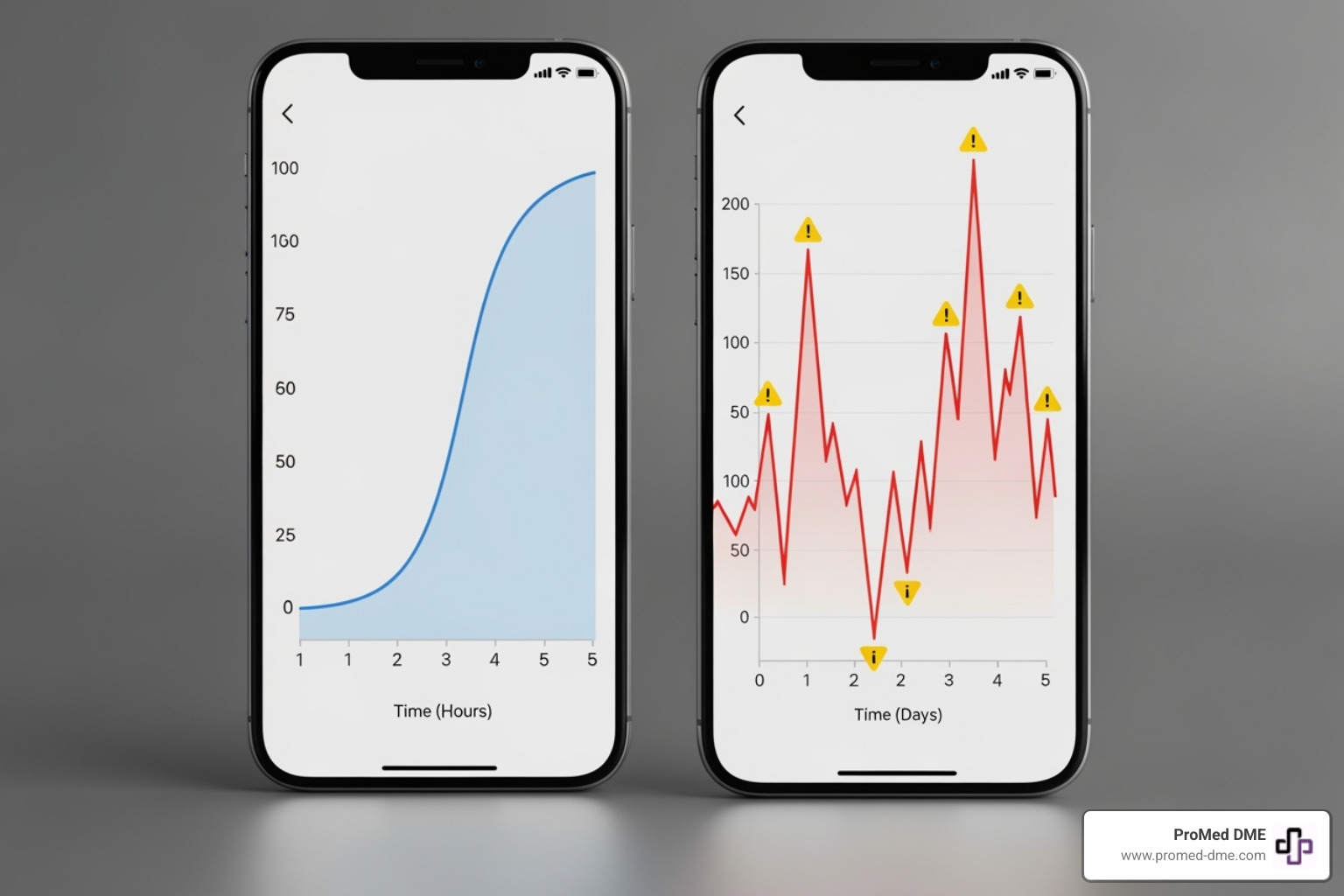
Table comparing key differences between accessible and prescription CGMs
Here's how these two types of CGMs compare side by side:
| Feature | Accessible CGM (e.g., Dexcom Stelo) | Prescription CGM (e.g., Dexcom G7, FreeStyle Libre 2/3) |
|---|---|---|
| Prescription Required | No | Yes |
| Alerts & Alarms | Typically no (e.g., no hypoglycemia alerts) | Yes (customizable alerts for high/low glucose, urgent low soon) |
| Target User | Adults (18+) not on insulin, prediabetes, wellness users | All ages (including children as young as 2), insulin users, type 1 & 2 diabetes |
| Data Frequency | Every 15 minutes (e.g., Stelo) | Every 1-5 minutes (e.g., G7 every 5 min, Libre 3 every 1 min) |
| Insulin Pump Integration | No | Yes (some models can integrate with automated insulin delivery systems) |
| Primary Purpose | Wellness & lifestyle insights, understanding glucose trends | Medical treatment decisions, diabetes management, preventing hypo/hyperglycemia |
| Cost Coverage | Typically out-of-pocket | Often covered by insurance for eligible individuals |
| Wear Time | 15 days (e.g., Stelo) | 10-14 days (varies by model) |
| Glucose Reading Range | 70-250 mg/dL (Stelo) | Wider range, e.g., 40-400 mg/dL (G7) |
The most important takeaway is that both types use similar sensor technology. The differences are in the software, safety features, and data presentation. If you want to see how your diet affects your energy, an accessible CGM is a great tool. But if you manage diabetes with insulin, the lack of alerts and integrations in accessible models makes them unsafe for your needs.
How to Get a CGM Without a Prescription
It’s an exciting time for personal health management. The path to getting a CGM without prescription has opened up, offering powerful new ways to take charge of your well-being.
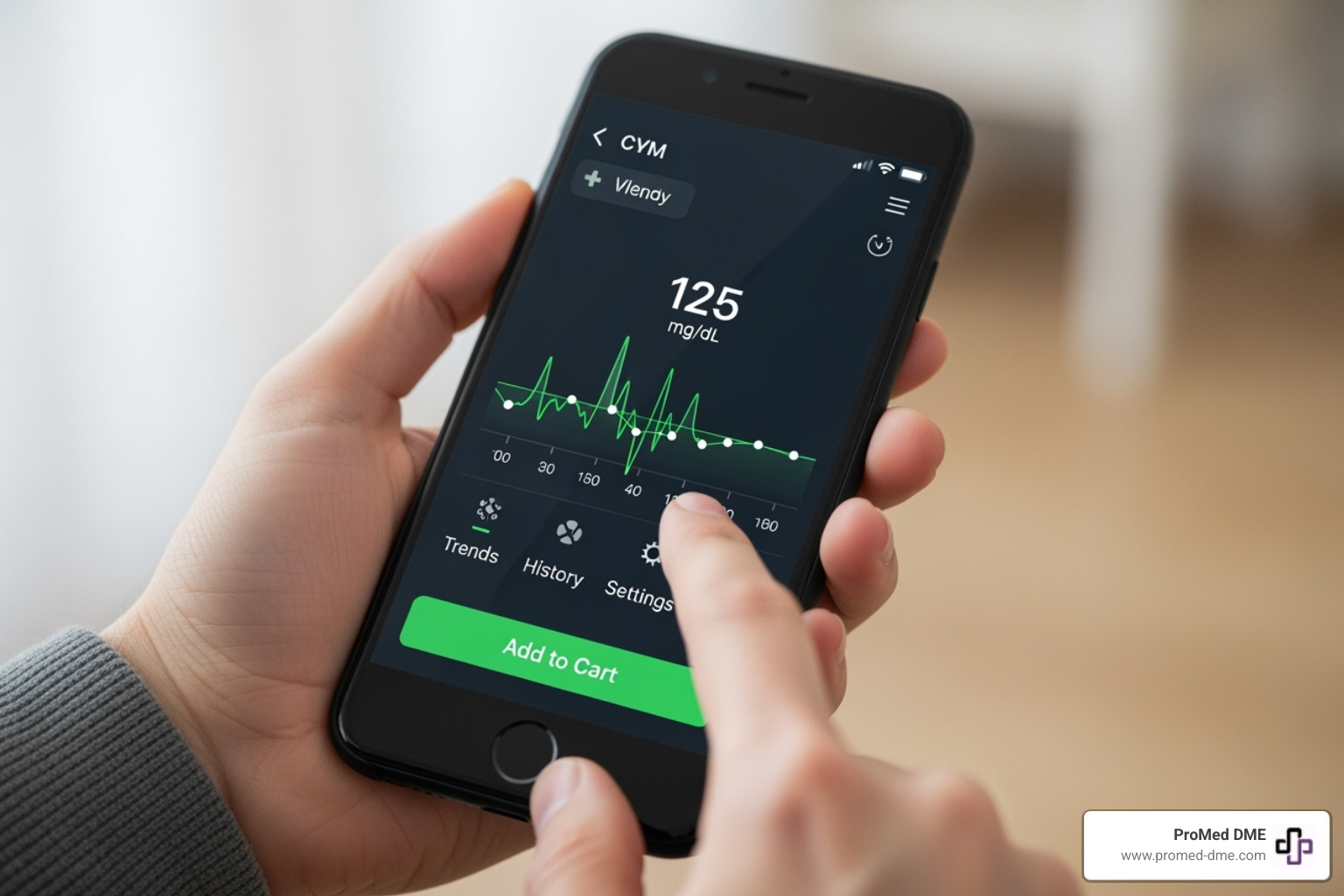
The Rise of Accessible CGMs
The most direct way to get a CGM without prescription is through new models specifically cleared by the FDA for over-the-counter (OTC) sales.
Leading this change is the Dexcom Stelo Glucose Biosensor System, the first of its kind to get FDA approval for consumer purchase without a doctor's order. Dexcom has announced that Stelo will be available to individuals across the US starting in the summer of 2024. This is a significant moment, making advanced technology accessible to millions.
The Dexcom Stelo will be available for purchase online through authorized suppliers and is expected to appear in local pharmacies and retail stores. This direct-to-consumer approach simplifies access. Keep an eye out for other companies like Abbott, who are also developing their own accessible OTC options, such as the Abbott Lingo.
Are there other ways to get a CGM for personal use?
Before official OTC models, many people accessed CGMs for wellness or prediabetes monitoring through other channels. These methods typically still involve getting a prescription, even if for off-label wellness use.
One popular route has been telehealth services. These online platforms can provide a CGM prescription after a virtual consultation or health questionnaire. While convenient, this route still requires a prescription, and the CGM is usually paid for out-of-pocket as insurance may not cover it for wellness purposes.
Some subscription-based wellness programs also bundle a CGM with an app and coaching, facilitating the prescription process as part of their service. Again, this is a prescription-based method.
While these methods have offered access, the new FDA-cleared OTC models simplify the process significantly, making it easier than ever to gain powerful insights into your metabolic health without needing to secure a prescription first.
Potential Risks and Safety Considerations
While a CGM without prescription offers incredible insights, it's a tool that comes with responsibility. It is important to remember that these devices are not a diagnostic tool, and the data requires context. Using the information without proper guidance can be misleading or even risky.
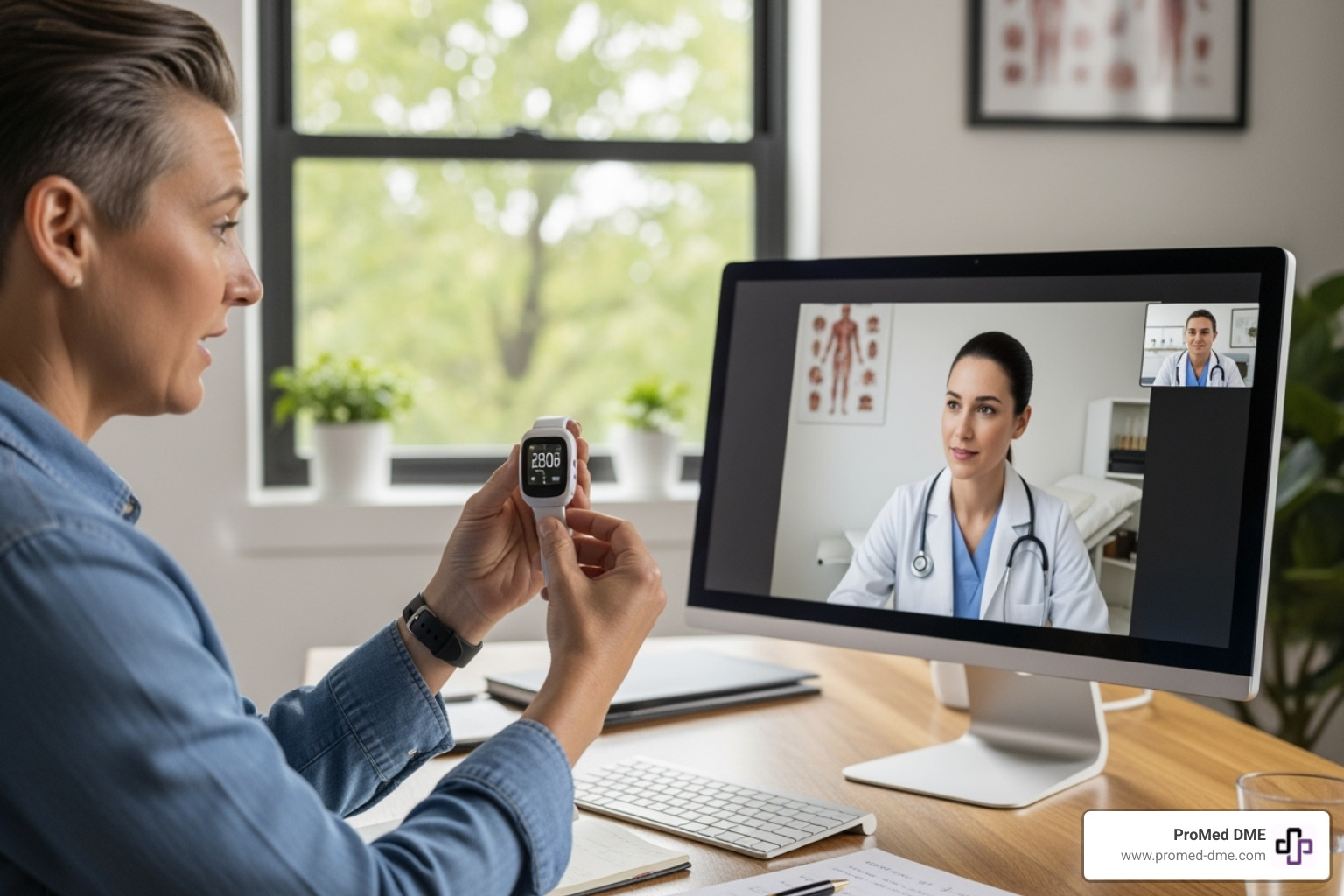
Why Accessible CGMs are NOT for Insulin Users
This is the most critical point: if you use insulin for Type 1 or Type 2 diabetes, over-the-counter CGMs like Dexcom Stelo are not designed for you. This is a vital safety warning.
The reason is that these accessible devices offer no low-glucose alerts. For someone on insulin, a sudden drop in blood sugar (hypoglycemia) can be dangerous and requires immediate action. Without an alarm, you could miss a serious low, putting your health at risk. The risk of missing problematic hypoglycemia is significant, as these devices are not built to detect or warn about these critical events. For more on this topic, see this resource on Understanding problematic hypoglycemia.
Simply put, these devices are not for making insulin dosing decisions. If you use insulin, you need a prescription CGM with all the necessary alerts for safe diabetes management.
The Role of a Healthcare Professional
Even with easy access to a CGM without prescription, a healthcare professional remains your most valuable partner. We strongly recommend consulting a doctor when using any glucose monitoring device, especially for the first time.
- Interpreting data: A professional can help you understand what the data patterns mean for your health.
- Treatment changes: Never adjust medications based solely on CGM data without your doctor's supervision.
- When to seek advice: If sensor readings don't match your symptoms, or you suspect a serious high or low, contact a doctor.
- Confirmation readings: CGMs measure glucose in the fluid under your skin, which can lag behind blood glucose. If a reading seems off, confirm it with a traditional blood glucose meter.
At ProMed DME, we are dedicated to helping you use products wisely and safely. Your well-being is what matters most.
Frequently Asked Questions about Getting a CGM Without a Prescription
As CGM without prescription opens up, it's natural to have questions. Here are answers to some of the most common ones.
What is the typical cost of an accessible CGM?
The cost of an accessible CGM varies by model and brand. Since these are generally paid out-of-pocket, you will likely be responsible for the full cost. Some manufacturers or wellness programs might offer subscription models that could reduce the per-month cost compared to a one-time purchase.
Based on current and upcoming products, you can expect to pay roughly $70-$150 for a month's supply of accessible CGM sensors. The good news is that Health Savings Accounts (HSAs) and Flexible Spending Accounts (FSAs) can typically be used to pay for CGM sensors, transmitters, and receivers, whether they are prescription or over-the-counter. This allows you to use pre-tax dollars for these health expenses.
Are accessible CGMs as accurate as prescription models?
Yes, the core technology is highly accurate. In many cases, the hardware is often similar to prescription versions. For example, the Dexcom Stelo uses the same reliable platform as the prescription-required Dexcom G7. Accuracy is often measured by a MARD score (Mean Absolute Relative Difference), and the scores for accessible CGMs are expected to be comparable to those of prescription models.
The main differences are in the software, features, and alerts, not the core sensor technology. The distinctions lie in what the app can do (like the lack of low-glucose alerts), its intended use, and the target user, not in the sensor's ability to accurately measure glucose.
Can I use a CGM if I don't have diabetes?
Absolutely. This is a primary reason for the development of a CGM without prescription. These accessible models are specifically designed for this use case, catering to individuals interested in understanding their metabolic health, optimizing their lifestyle, or simply gaining more insight into how their body functions.
For those without a diabetes diagnosis, a CGM offers a unique window into metabolic health. You can see how food, activity, stress, and sleep impact your glucose responses. This personalized feedback is incredibly motivating for making healthier lifestyle choices and can be a powerful tool for optimizing diet and fitness routines.
Conclusion: A Powerful Tool When Used Wisely
The world of glucose monitoring is truly changing! The arrival of CGM without prescription is a huge step forward in personal health technology. It means that the incredible power of continuous glucose monitoring is no longer just for doctors' offices. Now, it's easily available to many more people who are eager to understand their bodies better. This is a super exciting time, offering a new way to take charge of your health through real-time data. It's all about empowering you with information!
This new freedom, however, comes with a bit of responsibility. While an accessible CGM can give you amazing insights into how your daily choices affect your glucose levels, it's important to use it wisely. It's not a replacement for medical advice from a professional, especially if you have a diagnosed health condition or if you use insulin. Finding that sweet spot between tracking your health independently and getting expert medical guidance is truly key.
So, whether you're curious about how that pasta dinner affects your energy, working to manage prediabetes, or just want to learn more about your body's metabolism, an accessible CGM can be a fantastic partner. We really encourage you to accept this technology with smart choices. Use the data it provides to make informed decisions that lead to a healthier, happier you.
And when it comes to all your diabetes management needs, including testing supplies and getting support from a dedicated nurse, look no further than ProMed DME. We're here to help! We're committed to giving you top-quality products with truly exceptional customer service. Plus, we offer free shipping and work with most insurance plans to keep your out-of-pocket costs low. We ship all across the United States from our home base in Stuart, Florida. Ready to learn more? Learn more about our diabetes supplies.
Related Resources & Articles
Stay informed with our informative blog posts.
Discover the ProMed Advantage
& Try Our Products
We offer free shipping and legendary customer service to ensure you receive the
best DME products for your needs.


